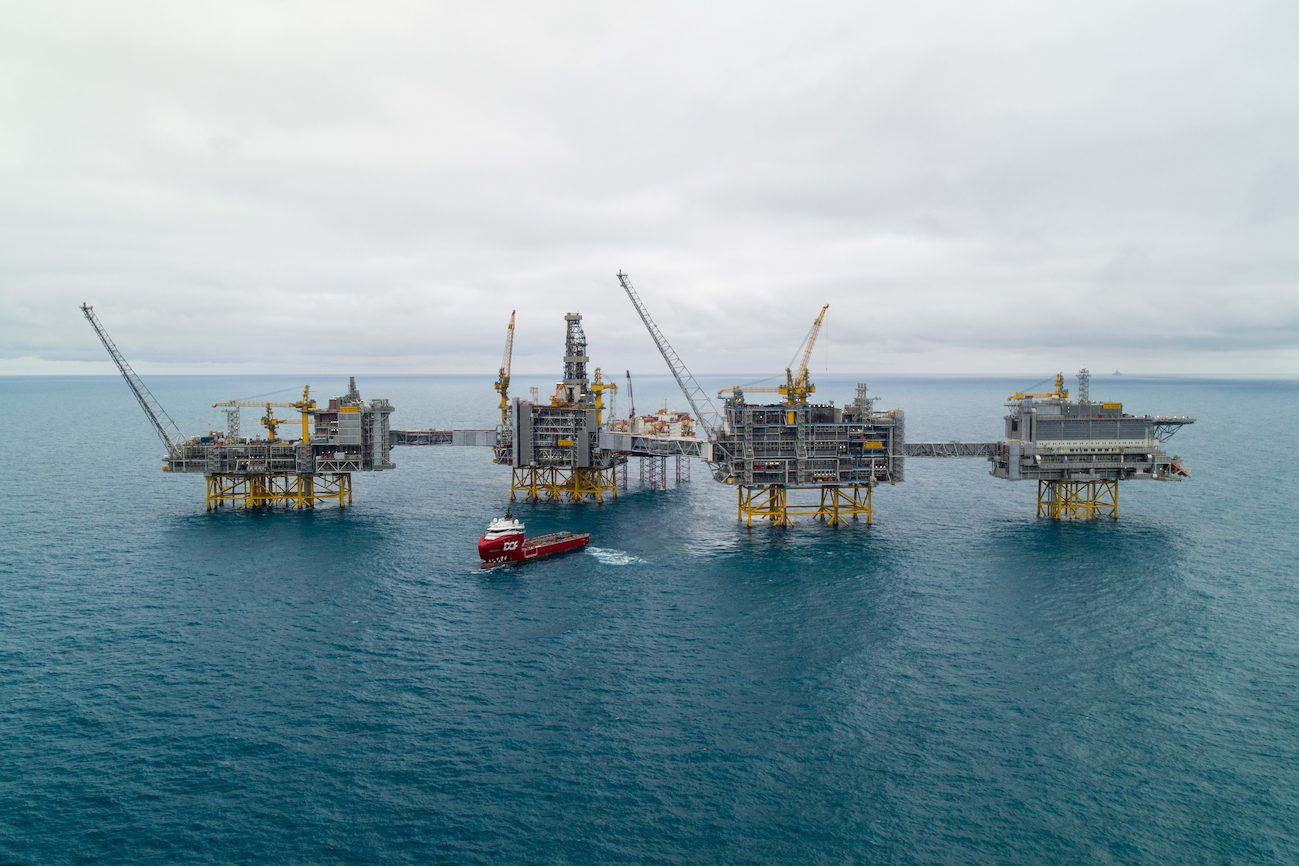The shore-powered Johan Sverdrup offshore field. Photo: Espen Ronnevik / Oyvind Gravas – Equinor ASA
Norwegian energy giant Equinor has launched an initiative to cut greenhouse gas emissions to near-zero by 2050 as it moves to combat global climate change in line with the Paris Agreement.
Total emissions for Equinor operated fields and plants in 2018 were around 13 million metric tons, approximately the same level as in 2005.
The firm’s new strategy seeks to reduce absolute greenhouse gas emissions from its operated offshore fields and onshore plants in Norway with 40% by 2030, 70% by 2040 and to near-zero by 2050. By 2030 this implies annual cuts of more than 5 million tonnes, corresponding to around 10% of Norway’s total CO2 emissions, according to Equinor.
“Equinor supports the Paris agreement and a net zero target for society. We have already brought CO2-emissions in the production process down to industry leading levels. We are now launching an unprecedented set of ambitions for forceful industrial action and substantial absolute emission reductions in Norway, aiming towards near zero in 2050. This is in line with society’s climate targets and our strategy to create high value with low emissions,” says Eldar Elder Saetre, CEO of Equinor.
Equinor says the 40% reduction by 2030 will be achieved through large scale industrial measures, including energy efficiency, digitalization and the launch of several electrification projects at key fields and plants, including the Troll and Oseberg offshore fields and the Hammerfest LNG plant. The company estimates the 2030 level of ambition will require investments of around NOK 50 billion (USD $5.68 billion) for Equinor and its partners.
Meanwhile, the 70% for 2040 and close-to-zero in 2050 targets will entail additional measures, such as more electrification of projects, consolidation of infrastructure, as well as opportunities to develop new technologies and value chains, such as hydrogen and carbon capture and storage, according to Equinor.
“In 2050, Equinor expects Norwegian oil and gas production to be less than half of current levels, assuming development of the defined projects ahead of us, substantial efforts to increase production from existing fields and continued exploration,” Equinor said in a statement.
Adopted in 2015, the Paris Agreement is a legally-binding global climate change agreement that seeks to limit global temperature rise to well below 2°C and pursuing efforts to limit it to 1.5°C, which would significantly reduce risks and the impacts of climate change.
“While realizing these ambitions, we also expect our operated fields and plants to create significant value with a potential to generate more than 3.000 billion Norwegian kroner in income for the Norwegian State towards 2030. New fields, field life extensions, improved oil and gas recovery and efficient operations will all contribute to substantial value creation. The new climate ambitions will strengthen future competitiveness and value creation for Equinor, while supporting industrial developments in Norway,” says Saetre.
“Collaboration is key to combat climate change. We appreciate the close cooperation with our industry partners and suppliers, and to realise these ambitions we need even closer collaboration across industries and with authorities. We plan investments in the order of 50 billion Norwegian kroner together with our partners by 2030 to cut emissions in order to strengthen the long-term competitiveness for our fields and plants. In setting these ambitions Equinor has assumed stable framework conditions and necessary investments in the electricity grid,” added Saetre.

 Join The Club
Join The Club











